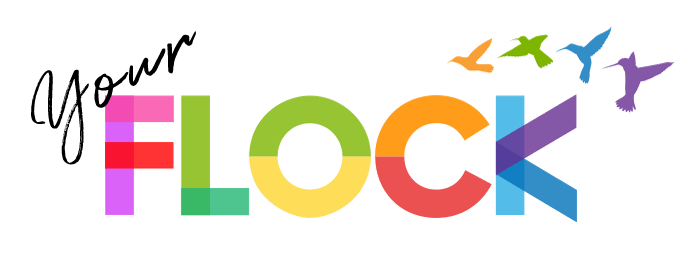Is this a recession or a “she session” and why we SHOULD all worry. And yes – we all should.
 This blog is NOT saying we have the answers (far from it – we don’t) It’s just the start of the conversation. And a call for answers…As our mission at Your FLOCK is to help a million people be happier at work – more than half of them might well be women. To be honest, I hope it’s even more as those of you that know me , know I am a champion for diversity and inclusion.
This blog is NOT saying we have the answers (far from it – we don’t) It’s just the start of the conversation. And a call for answers…As our mission at Your FLOCK is to help a million people be happier at work – more than half of them might well be women. To be honest, I hope it’s even more as those of you that know me , know I am a champion for diversity and inclusion.
Not just in the technology sector where I work with Your FLOCK – the team engagement platform that helps with your company culture – that I created with my co-founder. But also in the wider creative and digital sectors in which I have worked some 20 years. Some of that work came to fruition this month.
With the creation of a great campaign. Somewhat inspired by the #BigIDEA – which myself and the MPA started some time ago. And now is being brilliantly led by others. Under the hashtag #aPlaceforYou.
My seeming obsession with diversity and inclusion doesn’t come from my own diverse background. And having felt the power of non diversity across my career. But because I have a daughter and I, like all parents, want the best for my offspring.
It is also because diversity and inclusion is the thing that will help the world rebound. After the great resignation / the great reset / the great recession etc.
Diversity and inclusion is something that should be practised at every level of life. The world is becoming increasingly diverse and inclusive. As a result, companies must adapt to this new reality and understand how diversity and inclusion impacts them.
Why else should we be “diverse”:
“Diverse teams are simply smarter, making more fact-based decisions and driving people to resist entrenched ways of thinking. This is extremely important in a world of false news and misinformation.”
So says Christine Kuhl in the great article:
“Diversity and inclusion post-Covid: no better time to transform the boardroom?”
Whilst well known McKinsey research shows that. Companies in the top quartile for diverse leadership teams outperformed less diverse peers on profitability.
This might be due to the fact that a KPMG survey of employees at more than 1,700 companies in eight countries and across industries. Revealed that companies with more diverse management teams achieved 19 percent higher revenues due to more innovation.
Whilst Global research by Bersin determined a further dimension to that. Inclusive companies are more likely to be change-ready. Surely an essential quality for post-pandemic success.
McKinsey’s research not only shows that gender-diverse companies are 15% more likely to outperform their peers. But ethnically-diverse companies are 35% more likely to do the same.
Which is part of the reason why we built such a diverse team here at Your FLOCK. And we try to be as inclusive as possible. As Deloitte Australia research shows that inclusive teams outperform their peers. By 80% in team-based assessments!
As a tech tool that helps teams stay together for longer. We have to practise what we preach. We recruit people based on values and understanding. Rather than for other reasons (be they conscious or unconscious) and this helps us have a more diverse team.
But to bring it back to the point of gender. Catalyst research shows that companies with more women on the board outperform their peers over a long period of time. It seems, the more women you have in your business the more successful your business is. Proven by another famous study of profitable companies. In 91 countries by the Peterson Institute for International Economics. Which indicated that companies with
“30 percent representation of female leaders attained a 15 percent increase in the net revenue margin.”
Which is why we have more than 50% of women on our board at Your FLOCK. And if it were up to me we would employ a lot more women for our tech team.
BUT WHAT HAS THIS TO DO WITH WOMEN AND THE POST COVID WORLD.
As sadly, diversity in many workplaces has taken a hit. Since the pandemic began. With considerable data showing the fact that women and certain communities have been disproportionately impacted by covid. With
“Higher unemployment among women and Black and Hispanic females than among white males, prompting many to call the current condition a ‘She-session’.”
Why is this? Because women are 1.2 times as likely to cite acute difficulties with:
- workload increases,
- connectivity and belonging in the workplace,
- having a healthy and safe worksite,
- performance reviews,
- and physical health.
And mental health as well. As one of the most profound differences appeared around mental-health issues. In the United Kingdom and the United States, where:
“Women are 2.9 times and 2.6 times as likely to report acute challenges, respectively, compared with their male counterparts.”
Which has meant that a recent WerkLabs study found that. Since the pandemic began. Self-reported job satisfaction among women is 27 percent lower than for men in similar circumstances, and:
“Women are twice as likely as men to consider leaving their employer within a year.”
As bosses, team leaders and employees and colleagues. We should all take notice as similar trends have been noted SINCE the COVID-19 crisis. Amongst mothers of young children. Who are far more likely to downsize or leave the workforce than men.
YES I KNOW – ALL TYPES OF PEOPLE “BE LEAVING”.
Whether you are from a diverse / non represented background or not. People are leaving businesses. And during covid people were leaving without even knowing where they might go next.
With the cost of living crisis and the recession looming – might people just stay in jobs they dislike for the money? Only time will tell. But what we do know is that employee turnover has increased. When employees are being asked / required to come back into the office full time. And that 52% of employees say flexible work policies will affect the decision to stay at their organization.
Seeing how things are panning out. It is likely that employee turnover (which Your FLOCK helps decrease) will continue to increase. Because the emotional costs of leaving an organisation are lower. When hybrid and because there’s more choice in employers when location is no longer a factor.
As Gartner rightly state:
“To combat this sustained turnover, connect hybrid employees to the organization’s culture and invest in talent processes to expand employee networks.”
SO WHY IS IT THAT MORE ISN’T BEING DONE TO KEEP WOMEN HAPPY?
Although some companies have responded rapidly post covid. to this new world. Employees—and in particular diverse employees and working parents—are still struggling with the multitude of challenges posed by the pandemic. The result:
“only one in six diverse employees feels more supported now.”
And nine out of ten executives Mckinsey surveyed report challenges in executing their DEI strategies.
The other problem is the proximity bias of office managers and some team leaders and bosses. As…
“76% of managers say on-site employees are more likely than remote workers to be promoted.”
Which is shocking and should be illegal. Considering women and employees from underrepresented groups. Are much more likely to want to leverage flexible work. So proximity bias , sadly, has now become a recipe for inequity.
But what can be done?
This blog, and myself, am no expert on this. But I believe the future of work is going to be affected by women leaving the workforce. It’s worth thinking about how many changes your organisation could do. This isn’t something that my tech company thinks about providing a solution for. Our team togetherness platform Your FLOCK as based on inherent human values, is “blind” when it comes to gender. But there are many small changes that can be made to encourage women to stay in your company. And although non-exhaustive.
Here are a few suggestions from Intersol that resonated with me. That may help retain and attract women (and keep them happier) in the workplace. To:
- Understand the current gender dynamics. And adjust your hire and promotion practices to account for gap periods in women’s resumes
- Provide and enforce health and mental wellness days to compensate for additional care burdens
- Seek a better understanding of the issues by encouraging open discussion within your workplace
- Develop proactive messaging around self-care, gender equality, and mental wellness
- Walk the walk, promote an active role for leadership in the sharing of best-practices
- Support policies in the retention and recruitment of women in your workplace
I would truly appreciate your comments below with more detailed ideas. As said – we at Your FLOCK haven’t cracked this yet. And our team togetherness programme doesn’t cover gender differences but we would love your thoughts…
As if we don’t move into the future of work with more women in the global workforce. The worse the world of work will be. And we need leaders to direct resources towards this.
As I said at an event – many moons ago… on the Business Desk about “Why effective leaders need to think about culture”. As
“Technology is a great way to solve some of these problems, but it’s going to have to be people led to. It is all very well using things like YourFLOCK or Peakon. But leaders must think about their resources and how they manage those resources differently…We have to have people. So my question to everyone out there really is… “How much are you invested in the head of people, or your head of culture, or your head of happiness for your organisation?” In the future, they’re actually going to be key.”
Especially for creating an environment. Where women (and all people from diverse and underrepresented backgrounds) can thrive rather than just survive.
Right now, post covid the data seems to say some leaders are failing with that…
REFERENCES FOR THE PIECE:
https://www.mpa.org.uk/dan-sodergren-to-champion-mpas-diversity-and-inclusion/
https://www.gartner.com/smarterwithgartner/9-future-of-work-trends-post-covid-19
https://joshbersin.com/2015/12/why-diversity-and-inclusion-will-be-a-top-priority-for-2016/
Boston Consulting Group, ‘How diverse leadership teams boost innovation’, Jan. 23, 2018,
https://www.gartner.com/smarterwithgartner/9-future-of-work-trends-post-covid-19
The Peterson Institute for International Economics, ‘Is gender diversity profitable?’
Oliver Wyman, ‘Women in Financial Services 2020’
Independent Sector, ‘Why Diversity, Equity, and Inclusion Matter,’ Oct 6, 2016,
World Economic Forum, The Jobs Reset Summit, 07 Oct. 2020,
WerkLabs, ‘Work Now Report: How the pandemic is changing work,’ April 2020,
McKinsey & Company, ‘Women in the Workplace 2020,’ 30 Sept. 2020




